Identification and Quantification by NMR Spectroscopy of the 22R and 22S Epimers in Budesonide Pharmaceutical Forms
Abstract
:1. Introduction
2. Results and Discussion
3. Materials and Methods
3.1. Materials
3.2. NMR Spectroscopy Method
3.2.1. Sample Preparation
3.2.2. Instrumentation and Experiment Conditions
3.3. Reference Measurement with HPLC Method
3.3.1. Preparation of Solution
3.3.2. Instrumentation and Chromatographic Conditions
4. Conclusions
Author Contributions
Funding
Institutional Review Board Statement
Informed Consent Statement
Data Availability Statement
Conflicts of Interest
Sample Availability
References
- Vandevyver, S.; Dejager, L. New insights into the anti-inflammatory mechanisms of glucocorticoids: An emerging role for glucocorticoid-receptor-mediated transactivation. Endocrinology 2013, 154, 993–1007. [Google Scholar] [CrossRef] [PubMed] [Green Version]
- Varga, G.; Ehrchen, J. Immune suppression via glucocorticoid-stimulated monocytes: A novel mechanism to cope with inflammation. J. Immunol. 2014, 193, 1090–1099. [Google Scholar] [CrossRef] [PubMed]
- Miehlke, S.; Madisch, A. Budesonide is more effective than mesalamine or placebo in short-term treatment of collagenous colitis. Gastroenterology 2014, 146, 1222–1230. [Google Scholar] [CrossRef] [PubMed] [Green Version]
- Miehlke, S.; Aust, D. Efficacy and Safety of Budesonide, vs. Mesalazine or Placebo, as Induction Therapy for Lymphocytic Colitis. Gastroenterology 2018, 155, 1795–1804. [Google Scholar] [CrossRef] [PubMed] [Green Version]
- Maeda, K.; Yamaguchi, M. Utility and effectiveness of Symbicort® Turbuhaler® (oral inhalation containing budesonide and formoterol) in a patient with severe asthma after permanent tracheostomy. J. Pharm. Health Care Sci. 2018, 4, 24–28. [Google Scholar] [CrossRef] [PubMed]
- Krzek, J.; Czekaj, J.S. Direct separation, identification and quantification of epimers 22R and 22S of budesonide by capillary gas chromatography on a short analytical column with Rtx®-5 stationary phase. J. Chromatogr. B 2004, 803, 191–200. [Google Scholar] [CrossRef] [PubMed]
- Cortijo, J.; Urbieta, E. Biotransformation in vitro of the 22R and 22S epimers of budesonide by human liver, bronchus, colonic mucosa and skin. Fundam. Clin. Pharm. 2008, 15, 47–54. [Google Scholar] [CrossRef] [PubMed]
- Szefler, S.J. Pharmacodynamics and pharmacokinetics of budesonide: A new nebulized corticosteroid. J. Allergy Clin. Immunol. 1999, 104, S175–S183. [Google Scholar] [CrossRef]
- USP43-NF38. Budesonide. 604. Available online: https://online.uspnf.com/ (accessed on 8 November 2021).
- USP43-NF38. Budesonide Nasal Spray. 2S. Available online: https://online.uspnf.com/ (accessed on 8 November 2020).
- Li, Y.N.; Tattam, B. Seale Determination of epimers 22R and 22S of budesonide in human plasma by high-performance liquid chromatography-atmospheric pressure chemical ionization mass spectrometry. J. Chromatogr. B 1996, 683, 259–268. [Google Scholar] [CrossRef]
- Lu, Y.; Sun, Z. Simultaneous quantification of 22R and 22S epimers of budesonide in human plasma by ultra-high-performance liquid chromatography–tandem mass spectrometry: Application in a stereoselective pharmacokinetic study. J. Chromatogr. B 2013, 921–922, 27–34. [Google Scholar] [CrossRef] [PubMed]
- Yan, Y.; Wang, P. Synthesis of budesonide conjugates and their anti-inflammatory effects: A preliminary study. Drug Des. Dev. Ther. 2019, 13, 681–694. [Google Scholar] [CrossRef] [PubMed] [Green Version]
- Bhutnar, A.; Khapare, S. Isolation and Characterization of Photodegradation Impurity in Budesonide Drug Product Using LC-MS and NMR Spectroscopy. Am. J. Anal. Chem. 2017, 8, 449–461. [Google Scholar] [CrossRef] [Green Version]
- Malz, F.; Jancke, H. Validation of quantitative nuclear magnetic resonance. J. Pharm. Biomed. 2005, 38, 813–823. [Google Scholar] [CrossRef] [PubMed]
- Gottlieb, H.E.; Kotlyar, V. NMR Chemical Shifts of Common Laboratory Solvents as Trace Impurities. J. Org. Chem. 1997, 62, 7512–7515. [Google Scholar] [CrossRef] [PubMed]

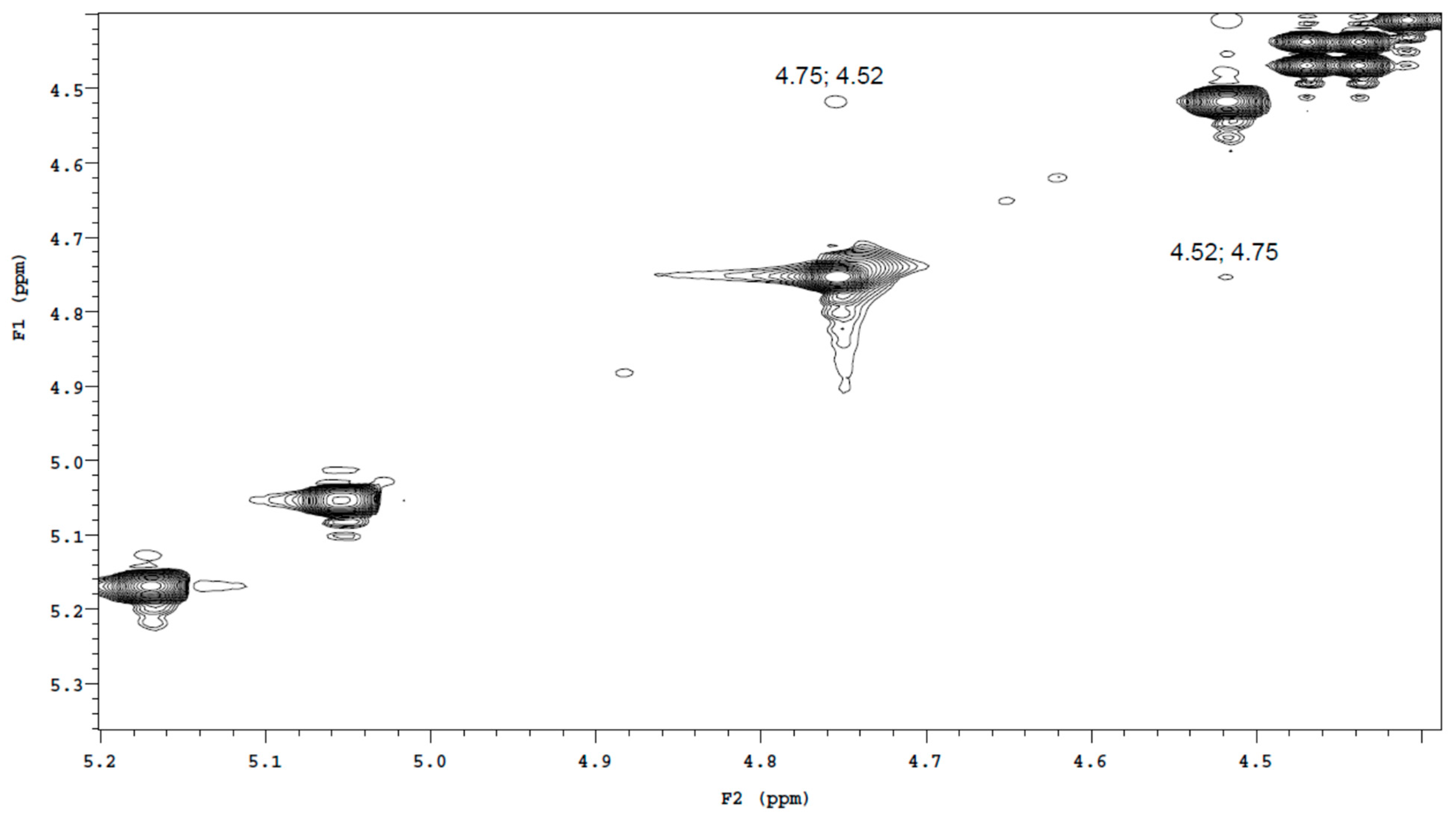
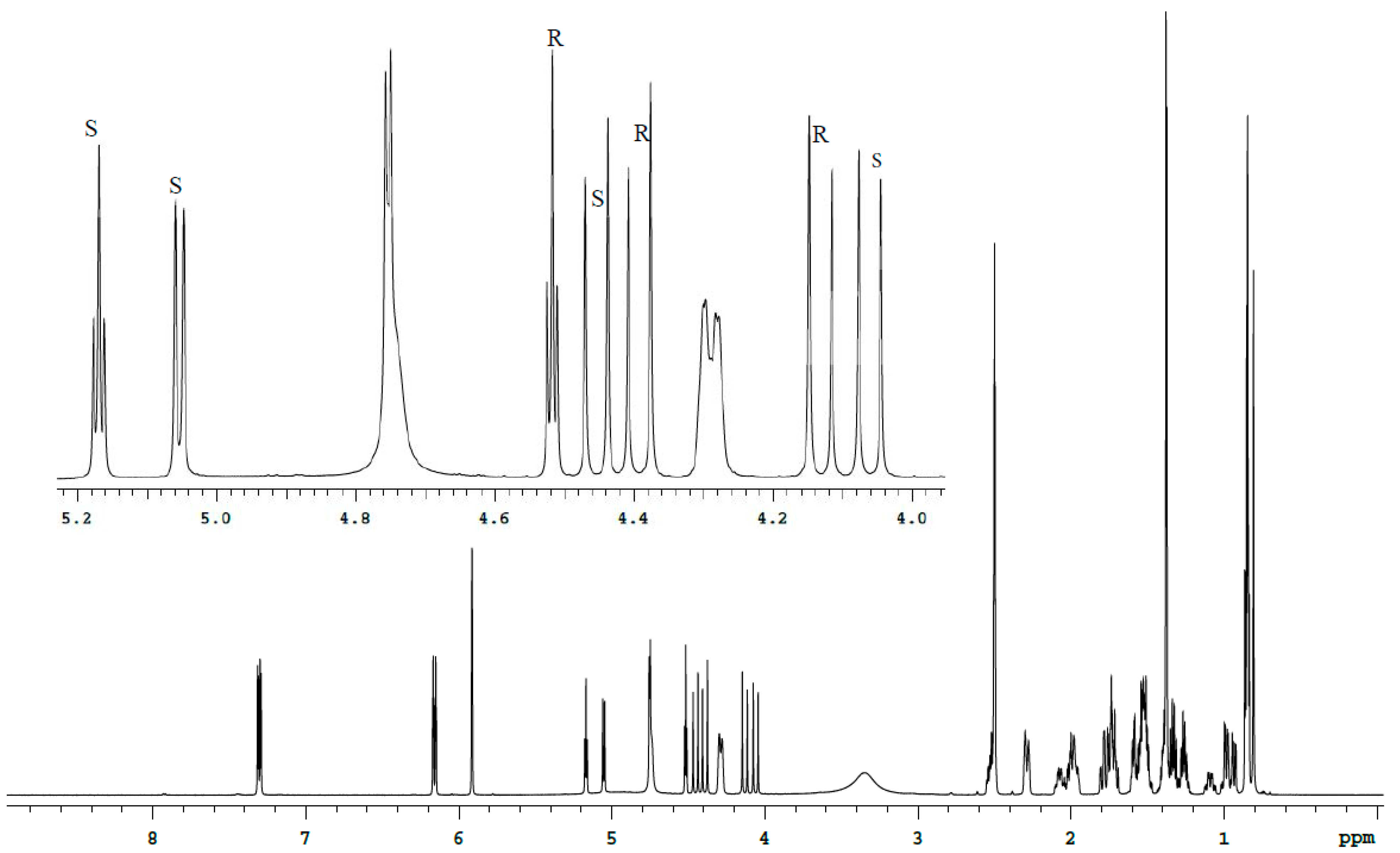
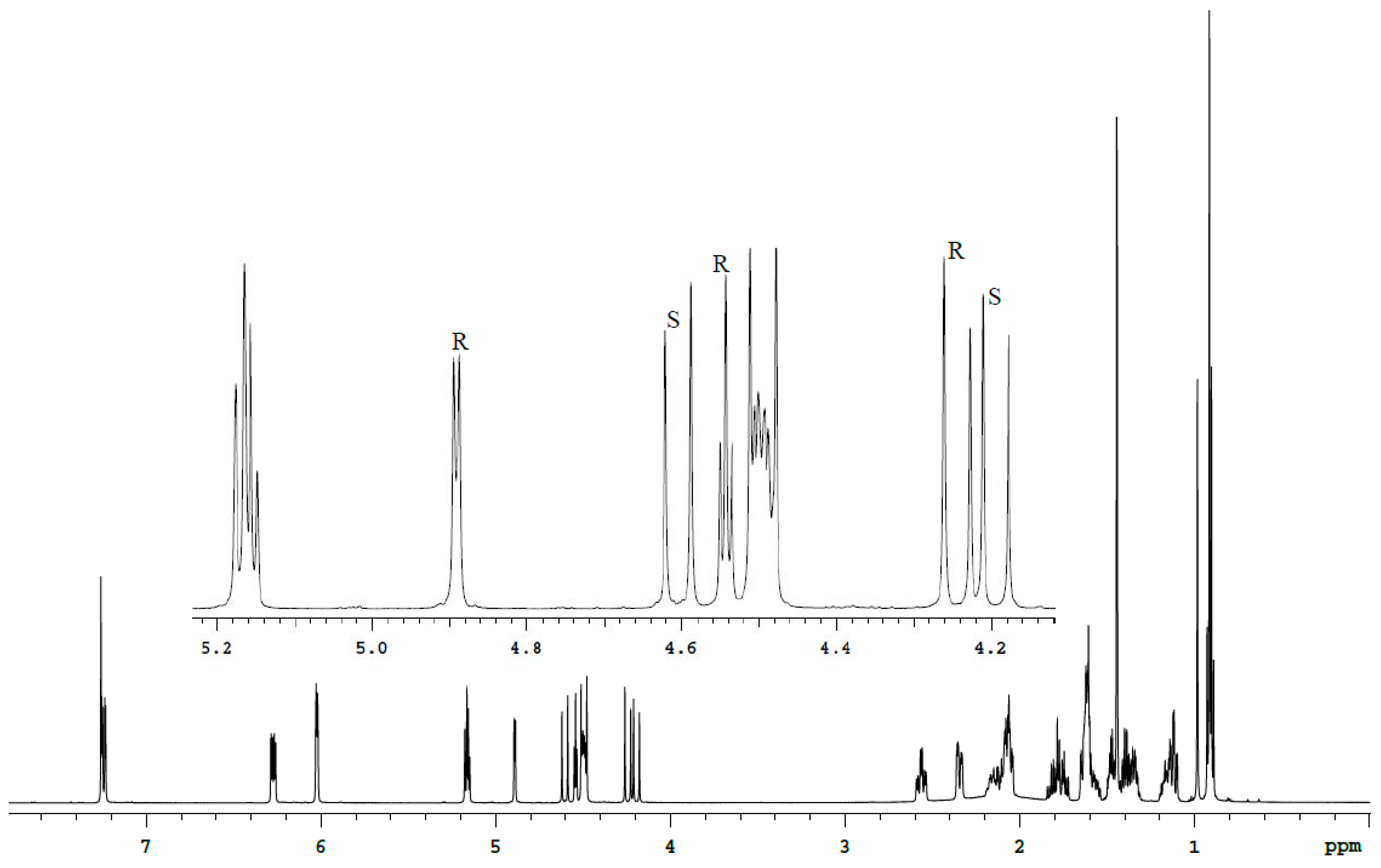
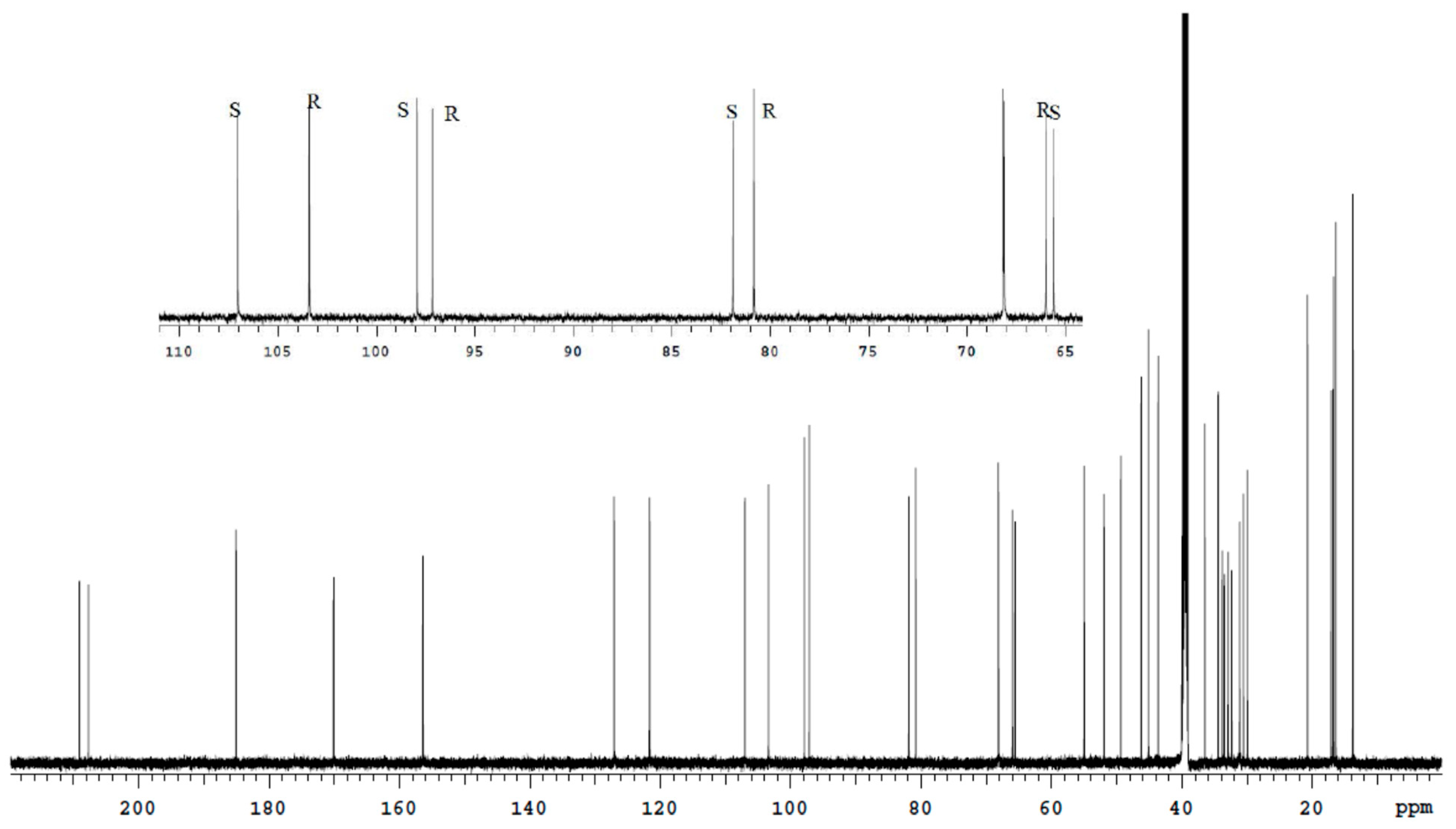
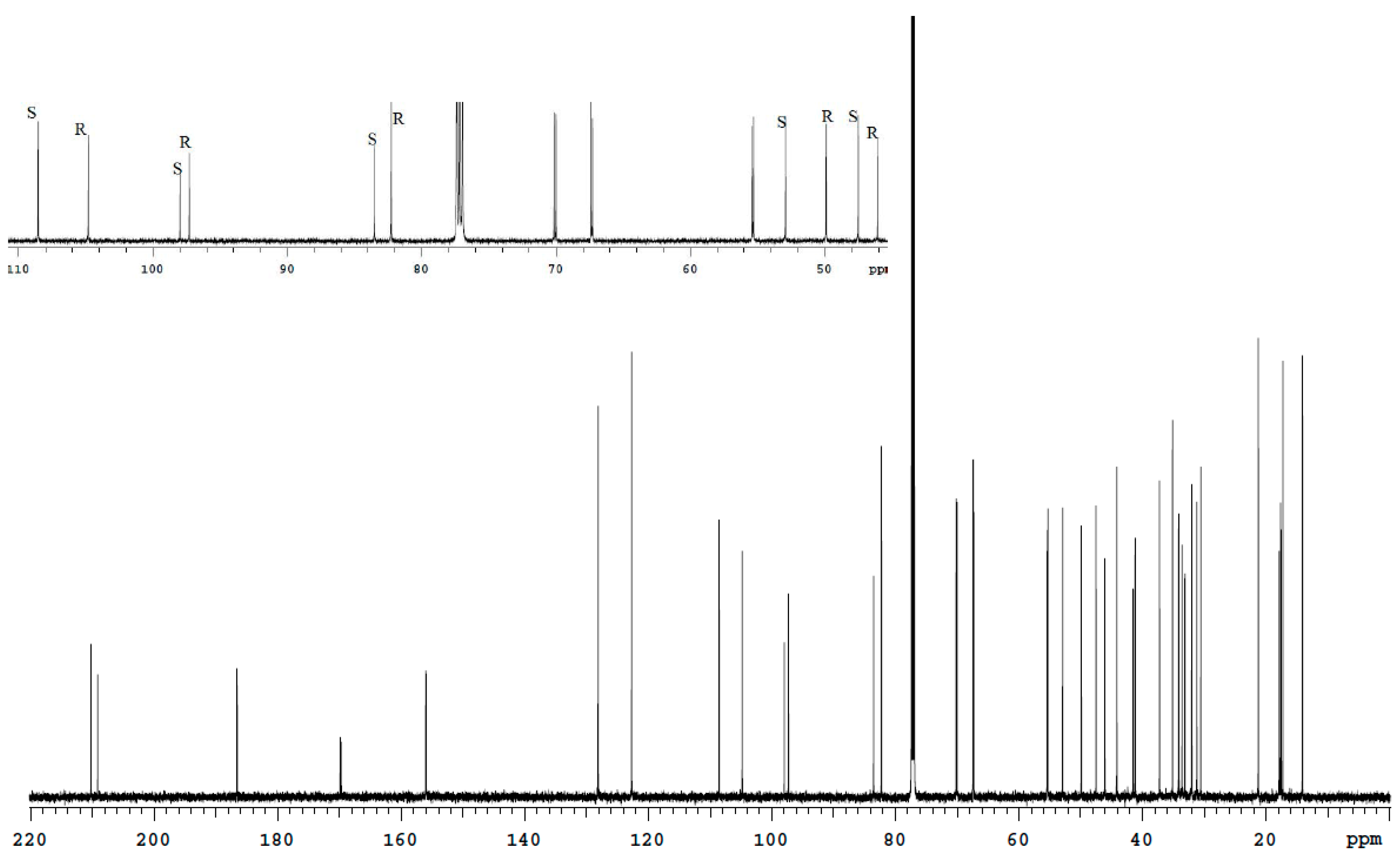
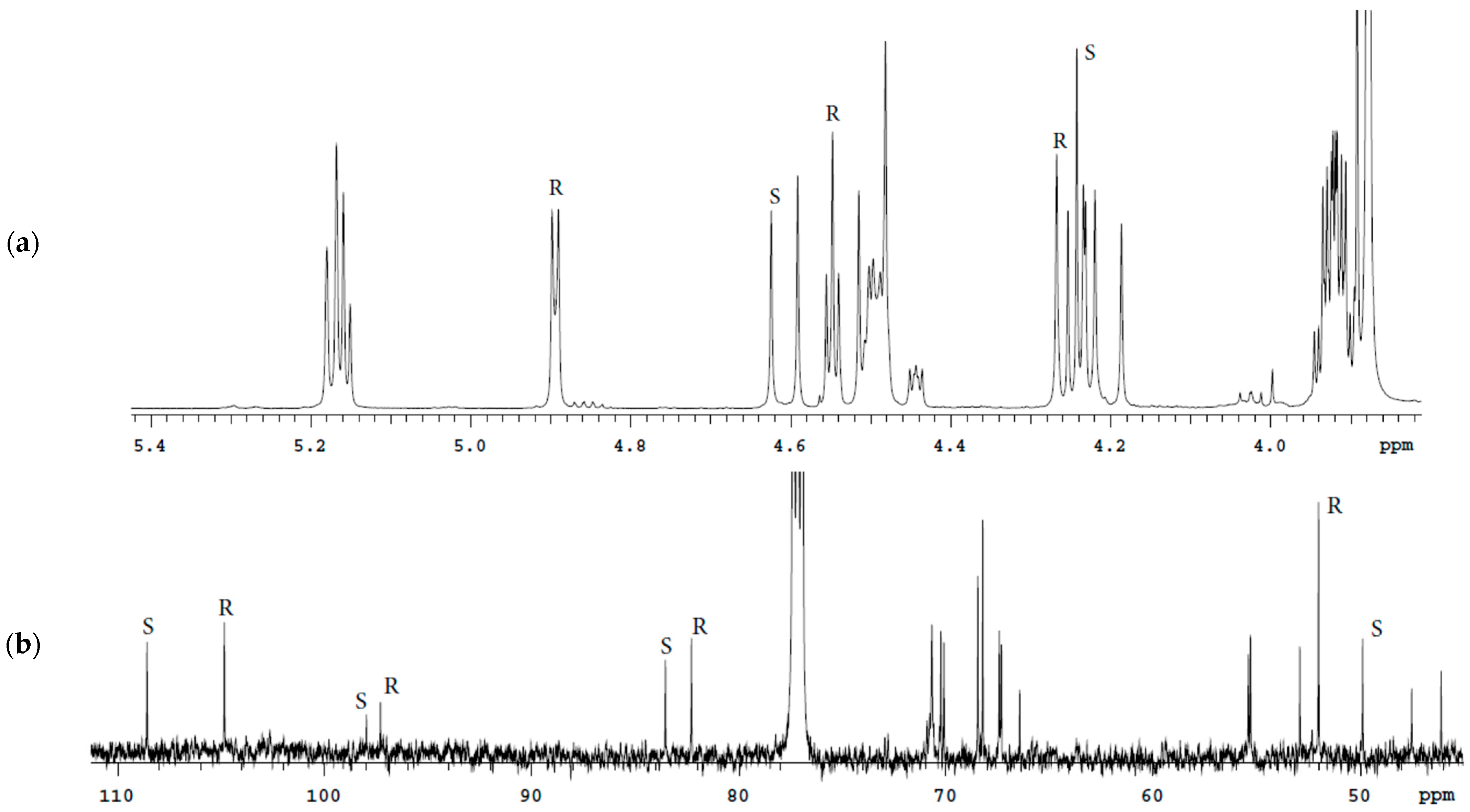
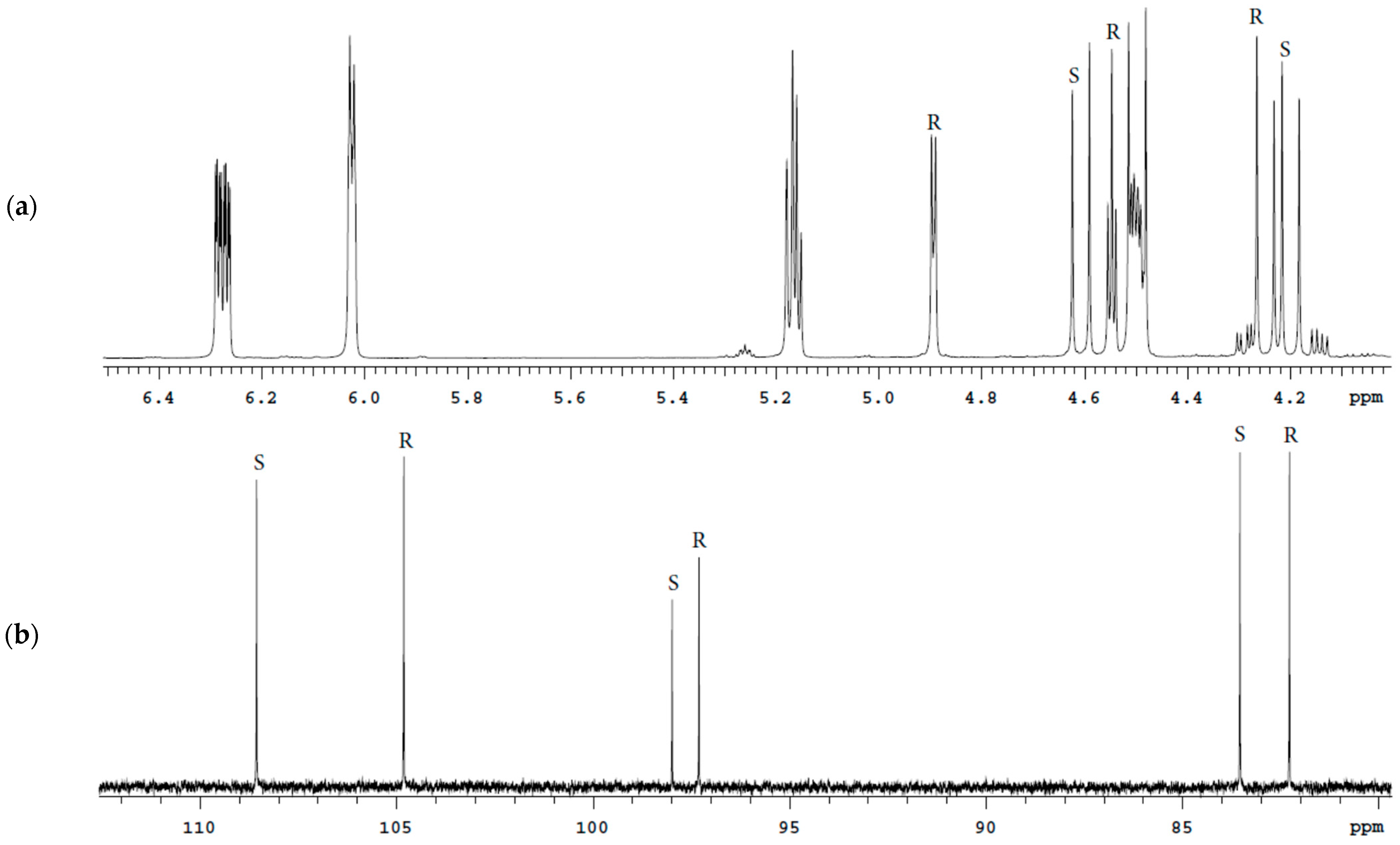
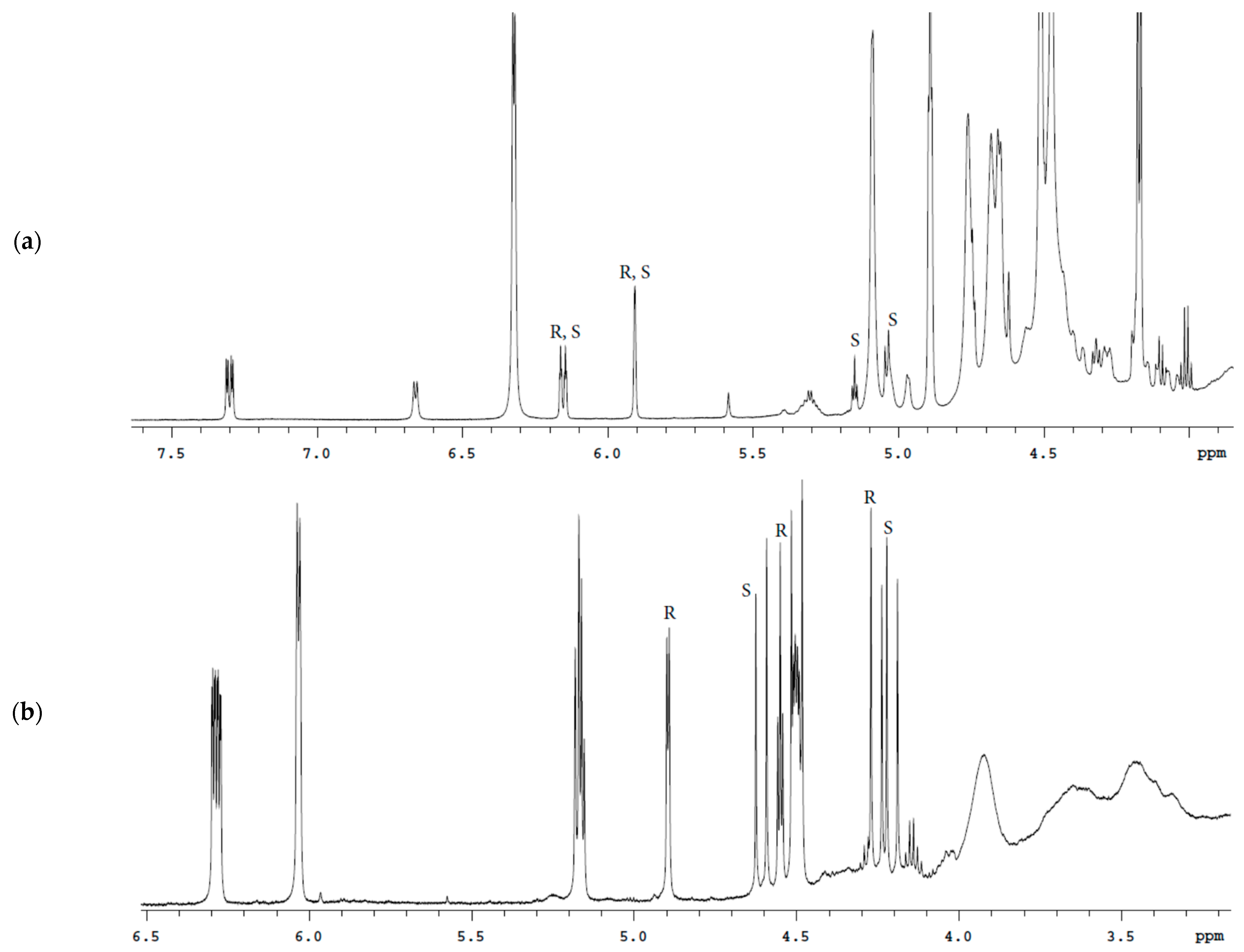
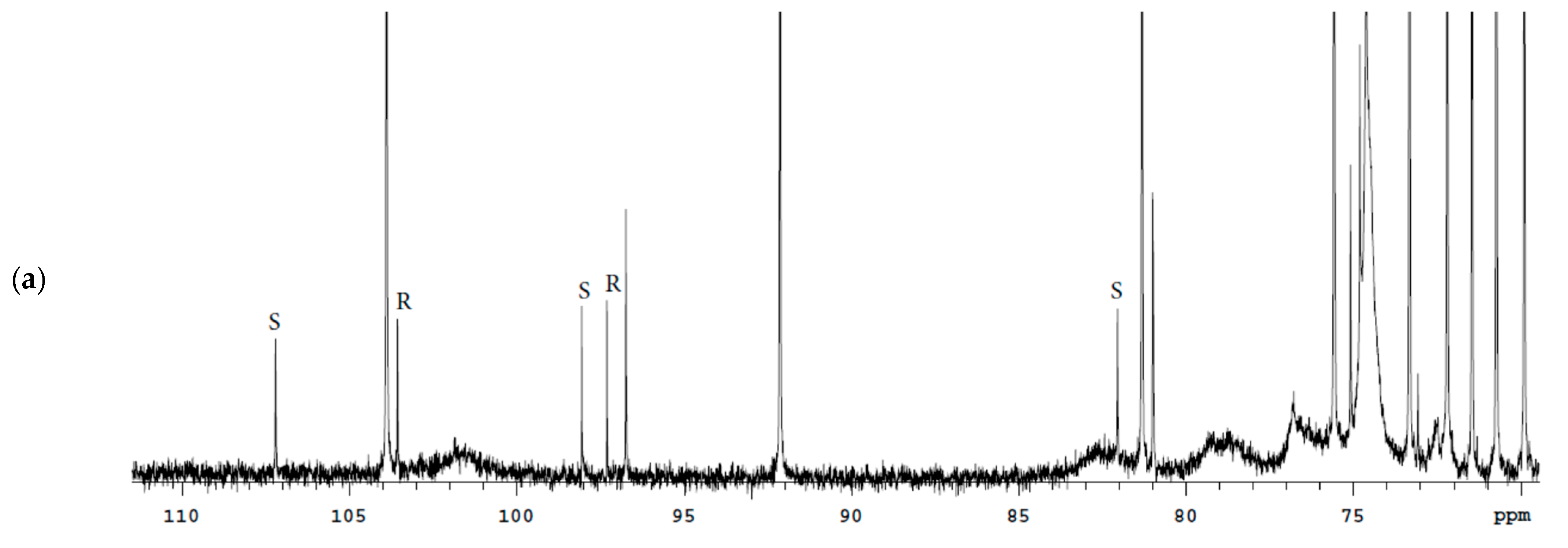

| No. | 22R | 22S | ||
|---|---|---|---|---|
| δ, ppm | δ, ppm | |||
| 1H | 13C | 1H | 13C | |
| DMSO-d6 | ||||
| 1 | 7.31 d (J = 10.0) | 156.40 | 7.30 d (J = 10.0) | 156.43 |
| 2 | 6.16 dd (J = 10.0; 1.9) | 127.11 | 6.16 d (J = 10.0; 1.9) | 127.08 |
| 3 | 185.08 | 185.06 | ||
| 4 | 5.91 br.s | 121.67 | 5.91 br.s | 121.62 |
| 5 | 170.09 | 170.16 | ||
| 6 | 2.29 m; 2.52 m | 31.17 | 2.29 m; 2.52 m | 31.15 |
| 7 | 1.07 dd (J = 12.3; 4.7); 2.00 m | 33.84 | 1.11 dd (J = 12.3; 4.7); 1.96 m | 33.51 |
| 8 | 2.07 m | 29.97 | 2.01 m | 30.58 |
| 9 | 0.99 dd (J = 11.2; 3.5) | 55.01 | 0.94 dd (J = 11.2; 3.5) | 54.99 |
| 10 | 43.64 | 43.66 | ||
| 11 | 4.30 m | 68.17 | 4.28 m | 68.13 |
| 12 | 1.73 m | 39.34 | 1.78 m | 39.57 |
| 13 | 45.14 | 46.26 | ||
| 14 | 1.51 m | 49.39 | 1.52 m | 51.96 |
| 15 | 1.52 m; 1.59 m | 32.93 | 1.58 m; 1.72 m | 32.38 |
| 16 | 4.75 d (J = 4.3) | 80.83 | 5.05 d (J = 7.3) | 81.90 |
| 17 | 97.17 | 97.92 | ||
| 18 | 0.81 s | 16.84 | 0.85 s | 17.50 |
| 19 | 1.38 s | 20.76 | 1.37 s | 20.74 |
| 20 | 209.11 | 207.71 | ||
| 21 | 4.13 d (J = 19.4); 4.39 d (J = 19.4) | 66.00 | 4.06 d (J = 19.2); 4.45 d (J = 19.2) | 65.60 |
| 22 | 4.52 t (J = 4.5) | 103.42 | 5.17 t (J = 4.8) | 107.04 |
| 23 | 1.53 m | 34.46 | 1.39 m | 36.50 |
| 24 | 1.33 m | 16.42 | 1.26 m | 16.75 |
| 25 | 0.85 t (J = 7.4) | 13.79 | 0.85 t (J = 7.4) | 13.79 |
| 11-OH | 4.74 br.s | 4.74 br.s | ||
| CDCl3 | ||||
| 1 | 7.25 d (J = 10.1) | 156.01 | 7.24 d (J = 10.1) | 156.04 |
| 2 | 6.28 dd (J = 10.1; 1.8) | 128.14 | 6.27 dd (J = 10.1; 1.8) | 128.14 |
| 3 | 186.63 | 186.58 | ||
| 4 | 6.03 br.s | 122.71 | 6.02 br.s | 122.71 |
| 5 | 169.88 | 169.75 | ||
| 6 | 2.35 ddd (J = 13.7; 4.5; 1.8) 2.56 ddd (J = 13.7; 13.5; 5.5) | 32.02 | 2.35 ddd (J = 13.7; 4.5; 1.8) 2.56 ddd (J = 13.7; 13.5; 5.5) | 32.00 |
| 7 | 1.17 m; 2.07 m | 34.14 | 1.17 m; 2.07 m | 34.11 |
| 8 | 2.16 m | 30.54 | 2.11 m | 31.19 |
| 9 | 1.12 m | 55.31 | 1.12 m | 55.41 |
| 10 | 44.14 | 44.14 | ||
| 11 | 4.50 br.d (J = 3.3) | 70.16 | 4.49 br.d (J = 3.3) | 70.08 |
| 12 | 1.63 m; 2.07 m | 41.17 | 1.63 m; 2.07 m | 41.51 |
| 13 | 46.09 | 47.51 | ||
| 14 | 1.61 m | 49.90 | 1.57 m | 52.92 |
| 15 | 1.61 m; 1.78 m | 33.58 | 1.75 m; 1.82 m | 33.13 |
| 16 | 4.90 d (J = 4.7) | 82.26 | 5.17 d (J = 6.8) | 83.53 |
| 17 | 97.31 | 97.99 | ||
| 18 | 0.92 s | 17.56 | 0.98 s | 17.85 |
| 19 | 1.44 s | 21.23 | 1.45 s | 21.22 |
| 20 | 210.26 | 209.17 | ||
| 21 | 4.24 d (J = 19.8); 4.50 d (J = 19.8) | 67.41 | 4.19 d (J = 19.8); 4.61 d (J = 19.8) | 67.31 |
| 22 | 4.54 t (J = 4.5) | 104.80 | 5.16 t (J = 5.1) | 108.54 |
| 23 | 1.62 m | 35.13 | 1.48 m | 37.22 |
| 24 | 1.39 m | 17.25 | 1.35 m | 17.56 |
| 25 | 0.92 t (J = 7.5) | 14.09 | 0.90 t (J = 7.5) | 14.06 |
| Bud | Content of 22S (22R), % | ||||
|---|---|---|---|---|---|
| DMSO-d6 | CDCl3 | Mean Volume | |||
| 1H | 13C | 1H | 13C | ||
| API | 47.45 (52.55) | 47.60 (52.40) | 47.47 (52.53) | 47.56 (52.44) | 47.52 (52.48) |
| Nasal spray | - | - | 46.67 (53.33) | 46.53 (53.47) | 46.60 (53.40) |
| Capsules | - | - | 47.82 (52.18) | 47.67 (52.33) | 47.75 (52.25) |
| Tablets | - | 48.60 (51.40) | - | 48.81 (51.19) | 48.71 (51.29) |
Publisher’s Note: MDPI stays neutral with regard to jurisdictional claims in published maps and institutional affiliations. |
© 2022 by the authors. Licensee MDPI, Basel, Switzerland. This article is an open access article distributed under the terms and conditions of the Creative Commons Attribution (CC BY) license (https://creativecommons.org/licenses/by/4.0/).
Share and Cite
Kuz’mina, N.E.; Moiseev, S.V.; Severinova, E.Y.; Stepanov, E.A.; Bunyatyan, N.D. Identification and Quantification by NMR Spectroscopy of the 22R and 22S Epimers in Budesonide Pharmaceutical Forms. Molecules 2022, 27, 2262. https://doi.org/10.3390/molecules27072262
Kuz’mina NE, Moiseev SV, Severinova EY, Stepanov EA, Bunyatyan ND. Identification and Quantification by NMR Spectroscopy of the 22R and 22S Epimers in Budesonide Pharmaceutical Forms. Molecules. 2022; 27(7):2262. https://doi.org/10.3390/molecules27072262
Chicago/Turabian StyleKuz’mina, Natalia E., Sergey V. Moiseev, Elena Y. Severinova, Evgenii A. Stepanov, and Natalia D. Bunyatyan. 2022. "Identification and Quantification by NMR Spectroscopy of the 22R and 22S Epimers in Budesonide Pharmaceutical Forms" Molecules 27, no. 7: 2262. https://doi.org/10.3390/molecules27072262
APA StyleKuz’mina, N. E., Moiseev, S. V., Severinova, E. Y., Stepanov, E. A., & Bunyatyan, N. D. (2022). Identification and Quantification by NMR Spectroscopy of the 22R and 22S Epimers in Budesonide Pharmaceutical Forms. Molecules, 27(7), 2262. https://doi.org/10.3390/molecules27072262






